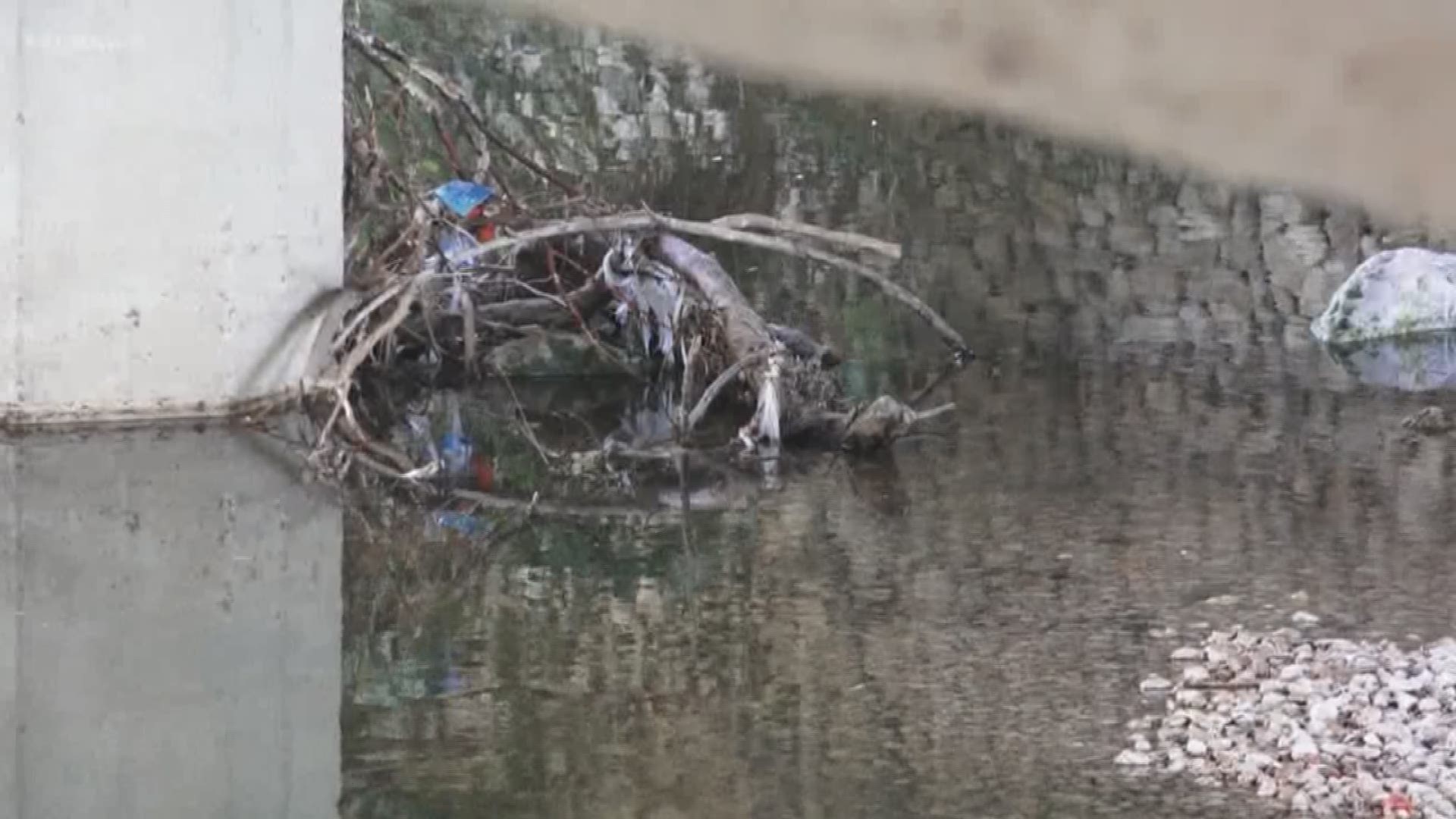AUSTIN — There's a dirty secret lurking in the waterways within the Austin city limits that can be hazardous to the health of many recreational swimmers and tubers in Central Texas.
According to a new report from the Environment Texas Research and Policy Center, titled "Swim at Your Own Risk," 46 out of 76 testing sites within the Austin city limits in 2017 had high levels of fecal matter at least once, which made it unsafe for recreational swimming and wading.
The report said in 2017, the Colorado River had two test sites east of Lady Bird Lake test positive for high levels of bacteria two out of four times. Other test sites impacted by the pollution last year included Waller Creek, Shoal Creek, Walnut Creek, West Bouldin Creek, East Bouldin Creek and Blunn Creek.
“We should be able to expect that all of our waterways, including those that run through our cities and communities, are clean and free from dangerous pollution,” said Luke Metzger, executive director at Environment Texas Research and Policy Center. “But the fact is that many of the state’s rivers, lakes and beaches are sometimes too polluted to go swimming, tubing or wading safely."
Exposure to fecal bacteria can cause gastrointestinal illness, respiratory disease, ear and eye infections, and skin rashes, according to Environment Texas.
In the report, Environment Texas said fecal contamination can come from urban stormwater runoff and sewage overflows. They recommended that there should be a public notification system for water quality that is similar to the Texas Beach Watch system.
Timothy Thetford said it's a concern for Austinites like him, especially for those who are around the bodies of water on an everyday basis.
"Thousands of people and dogs come walk around the creek," Thetford explained.
He said humans are contributing by bringing their animals and letting them drop waste by the creeks.
"A lot of people will pick it up only when it's on the path, but it's all washing into the lake," Thetford explained.
"Too often many of our creeks and beaches have so much pollution that they are not safe," Metzger added.
"If they're not on top of it, then it's kind of concerning," Thetford said.
Read the full report here.
The Texas General Land Office offers an online tool that can help you monitor recent bacteria levels in Texas waters here. Reminder: the fecal bacteria level for safe human contact is 200 cfu/100 ml (200 colony forming units per 100 milliliters of water). "Low" levels indicate the water is well below 200 cfu/100 ml.

